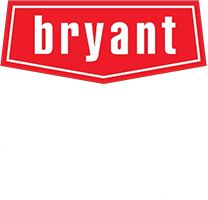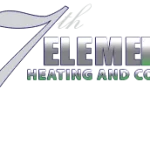Creating a Healthier, Cleaner Home Environment Starts with the Air You Breathe
As a homeowner in Nampa, you invest in creating a safe and comfortable sanctuary for your family. You choose the right furniture, maintain your yard, and ensure your home is secure. But what about the one element you interact with every second of every day? The air inside your home. Modern homes are built to be incredibly energy-efficient, which is great for utility bills but can unfortunately trap airborne contaminants inside. This can lead to poor indoor air quality (IAQ), affecting everything from allergies and sleep to overall wellness.
For health-conscious families, especially in the Treasure Valley where seasonal pollen, dust, and wildfire smoke are common concerns, addressing IAQ is no longer a luxury—it’s a critical component of a healthy home. An indoor air purification system works alongside your existing HVAC equipment to clean and filter the air throughout your entire house, not just one room, creating a consistently cleaner and healthier environment for everyone.
What’s Polluting Your Nampa Home’s Air?
You might be surprised by the sources of indoor air pollution. While a standard furnace filter can catch large dust particles, it’s the microscopic contaminants that often pose the greatest risk to your family’s health. Understanding these culprits is the first step toward finding the right solution.
Particulates & Allergens
These are tiny solid particles suspended in the air. Common examples include dust, pet dander, pollen from local agriculture and trees, and fibers from fabrics. During certain seasons in Nampa, pollen counts can be especially high, triggering allergy and asthma symptoms.
Biological Contaminants
This category includes living organisms like bacteria, viruses, and mold spores. They can thrive in ductwork or areas with moisture and circulate throughout your home every time your HVAC system runs, potentially spreading illness and causing respiratory issues.
Gases & VOCs
Volatile Organic Compounds (VOCs) are gases emitted from common household products like paints, cleaning supplies, new furniture, and air fresheners. These chemicals can cause headaches, nausea, and long-term health effects.
How Whole-Home Air Purification Works
Unlike portable units that clean the air in a limited area, a whole-home indoor air purification system is professionally integrated directly into your central heating and cooling system. As air is pulled into your HVAC system to be heated or cooled, it passes through the purifier, which captures, neutralizes, or destroys contaminants before the clean, conditioned air is distributed to every room in your home through the ductwork. This process ensures consistent air quality around the clock.
Proper HVAC installation and repair are crucial for these systems to function optimally, as they rely on the airflow generated by your furnace or air handler.
Choosing the Right Air Purification Technology
There isn’t a single “best” air purifier; the ideal choice depends on your specific concerns and home environment. Here are the primary types of whole-home systems available:
| Technology Type | How It Works | Best For |
|---|---|---|
| High-Efficiency Media Filters | Uses a dense filter medium (often with a high MERV rating) to physically trap airborne particles like dust, pollen, and dander. | Homes with allergy sufferers, pets, or high levels of dust. |
| UV-C Germicidal Lamps | Emits ultraviolet light inside your ductwork, which scrambles the DNA of microorganisms like mold, bacteria, and viruses, rendering them harmless. | Families concerned with germs, mold growth in damp climates, and preventing illness. |
| Electronic Air Cleaners (EACs) | Uses an electrostatic charge to make particles stick to collector plates. These plates can be washed and reused. | Capturing microscopic particles and for homeowners who prefer a reusable filter solution. |
In many cases, a hybrid approach combining a high-efficiency filter with a UV lamp provides the most comprehensive air purification. To keep any system running effectively, sticking to regular HVAC maintenance plans is essential to ensure proper airflow and system health.
The Nampa Advantage: Why Air Purification Matters in the Treasure Valley
Living in Nampa offers a wonderful quality of life, but our unique environment presents specific air quality challenges that a whole-home system can directly address.
- Seasonal Allergies: From spring tree pollen to fall weed pollen, the Treasure Valley has distinct allergy seasons. An air purifier captures these irritants before they can circulate in your home.
- Wildfire Smoke: Summer and fall can bring smoke from regional wildfires, filling the air with fine particulate matter that is dangerous to inhale. A high-efficiency filter can significantly reduce these harmful particles indoors.
- Dry, Dusty Climate: Idaho’s arid climate means more dust in the air. This not only makes cleaning a chore but can also irritate sinuses. A whole-home system reduces airborne dust. For ultimate comfort in our dry climate, pairing a purifier with a whole-house humidifier can also help maintain optimal humidity levels.
- Protecting Your Equipment: By removing dust and debris before it can build up on your HVAC system’s sensitive internal components, an air purifier can help prevent costly breakdowns and the need for premature AC repair or furnace service.
Ready to Improve Your Family’s Health and Comfort?
If you’re ready to explore how an indoor air purification system can transform your Nampa home’s environment, the expert team at 7th Element Heating and Cooling is here to help. We provide honest, educational guidance to help you find the perfect solution for your family’s needs.
Frequently Asked Questions
What’s the difference between a portable air purifier and a whole-home system?
A portable purifier only cleans the air in a single room. A whole-home system is installed within your HVAC system to constantly clean the air being distributed throughout your entire house, offering a more powerful and comprehensive solution.
How often do the filters or components need maintenance?
This varies by system. Media filters typically need to be replaced every 6-12 months. UV bulbs last for 1-2 years. Electronic air cleaner plates just need to be washed periodically. We cover all maintenance schedules during installation.
Will an air purification system significantly increase my energy bills?
Most modern air purification systems are designed for energy efficiency and have a minimal impact on your electricity usage. In fact, by keeping your HVAC system cleaner, they can even help it run more efficiently, potentially offsetting some of the energy cost.
Can an air purification system help with pet odors?
Absolutely. Air purifiers are excellent at removing pet dander, which is a common allergen. Certain systems with carbon filters are also highly effective at trapping and neutralizing the odor-causing particles associated with pets.
Glossary of IAQ Terms
IAQ (Indoor Air Quality): A term used to describe the air quality within and around buildings and structures, especially as it relates to the health and comfort of occupants.
VOC (Volatile Organic Compound): Chemicals that are released as gases from certain solids or liquids. VOCs include a variety of chemicals that may have short- and long-term adverse health effects.
HEPA (High-Efficiency Particulate Air): A designation used to describe filters that are able to trap 99.97% of particles that are 0.3 microns in size.
MERV (Minimum Efficiency Reporting Value): A rating scale from 1 to 16 that measures a filter’s ability to capture particles of varying sizes. A higher MERV rating indicates finer filtration.
UV-C Light: A type of ultraviolet light, also known as germicidal UV, that is effective at deactivating the DNA of bacteria, viruses, and other pathogens, thus destroying their ability to multiply and cause disease.

